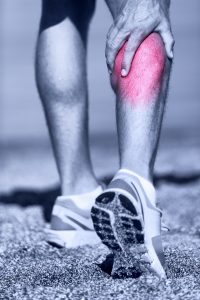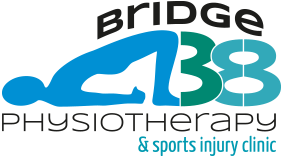
My injury happened yesterday – what should I do? You may not need to see a physiotherapist initially, and by following some simple advice you will get back to doing what you love in no time.
So you’ve sustained an injury which is not serious enough to warrant hospital attention so what should you do in the immediate few days after your injury? Call the P.OL.I.C.E!
You may have heard acronym PRICE: Protection, Rest, Ice, Compression, Elevation to treat an acute injury, however, we know from evidence that rest is not always the best course of action for an injury and can actually make the outcome worse.
P.OL.I.C.E. stands for Protection, Optimal Loading, Ice, Compression, Elevation.
Protection:
Protection really means do no further harm to the area. You may require 24-48 hours of relative rest after an injury. This means that you may need to curtail your sporting activity or minimise weight bearing initially. After a few days, gentle motion can be started while you still maintain a level of protection for the injured area.
Optimum Loading:
During the protection phase, gentle motion can, and should, be started early on. Even gentle strengthening exercises can be commenced early on which can also improve pain. This progressive loading of your injury can help promote optimal healing of the injury, and it can prevent delays in returning back to normal due to joint and muscle tightness or muscle wasting and weakness. If you are unsure what to do in this phase you may need to seek the advice of a health professional.
Ice:
There is ongoing debate as to what ice actually does to improve an injured body part. However, applying ice may help to manage the swelling around your injured muscle or joint and prevent secondary damage from on-going swelling. Ice can really help reduce the pain that you may be experiencing. NEVER apply ice directly to the skin. Always have a damp cloth over the injured part before applying ice whether that be an ice pack or a pack of frozen peas. Leave on the area for 10 minutes and reapply frequently every 2 hours during the first 48 hours. You may find after 48 hours it just helps to apply it for pain relief.
Compression:
Compression can be applied with a bandage or even whilst the ice is on the area. The thought process behind this is that in the initial days following injury, your body brings a lot of blood and fluid to the injured site to prepare it for healing. But your body brings too much fluid to the injured area. This excessive fluid limits range of motion around your joint, and can actually delay proper healing. By applying a compressive bandage to the area you will help to reduce the excess fluid.
Elevation:
Elevation is simple for some body parts. An injured ankle or knee can be placed on a stack of pillows while you are lying down. An injury to your elbow or wrist requires that you elevate your entire arm, a sling may help this.
Sometimes injuries are more serious and need to be checked out. Warning signs that something is more serious and you should definitely seek immediate advice are:
1. swelling and bruising that come up immediately after the injury.
2. unable to weight bear after 24 hours.
3. any signs of deformity around the joint.
4. unable to move the joint at all due to severe pain.
5. extremities that start feel cold to the touch.
